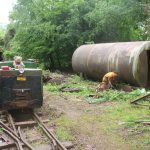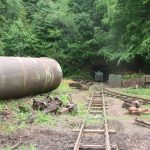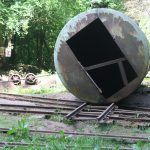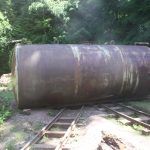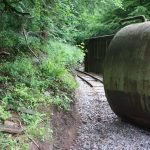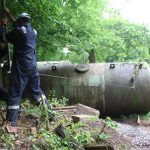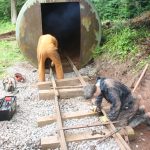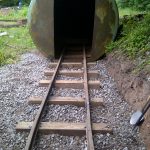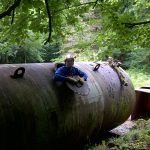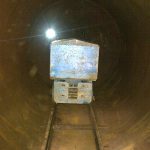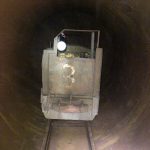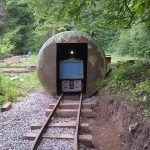Turning a tank into a shed
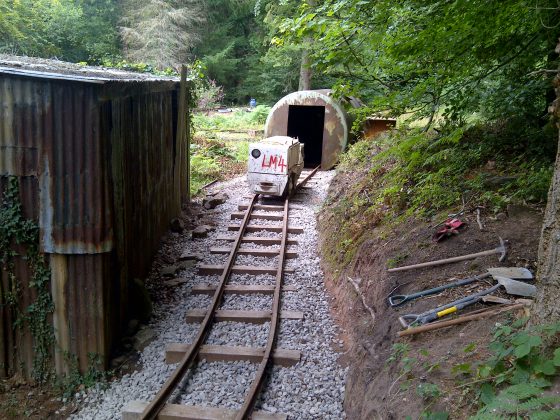
As part of the original preservation project at Lea Bailey in the mid-1990s, a steel tank was delivered to the site. As is common at Freemines in the Forest of Dean, things are re-used for something other than their original purpose (the Haywood Drift Mine near Cinderford uses one as an entrance) our example had been modified by having a door cut in one end and drainage slots in the bottom. By a happy coincidence, the door was just the right size to allow our battery-electric locomotives to enter, and the only modification needed was to cut two slots for the rails and wheel flanges. Of course the tank would need to be moved to a location that would allow track to be laid into it — luckily we had a Tirfor winch available which would do the job, albeit rather slowly!
Having checked that the tank was not attached to the supports (it wasn’t), a “trial pull” revealed that the tank would indeed move, so the end of our newly-laid siding and its buffer stop were duly removed again ready for the new resident. Setting up the Tirfor was a simple matter of finding a straight route and attaching a strop to a strong tree roughly in line — luckily there is no shortage of those at Lea Bailey. As there is no “steering”, the winch must be attached to a different tree in order to change direction. Crossing the track was a matter of laying another temporary track panel over the top of the rails to allow the bottom of the tank to slide into position. Winching the back end in laterally completed the job with the happy accident of rotating the tank just enough to align the door into an upright position.
With the tank in position it was time to lay the track. A quick check of the available spare rails coupled with a measurement of the inside of the tank revealed a slight mismatch. All of the rails were too long, or you could say that the inside of the tank was too short. Options were considered such as cutting the ends off the rails, or making a two small holes in the end of the tank, but in the end we managed to winch it a few inches away from the rail joint in order to make room. Once the rails and sleepers were connected up and ballasted (plus some steel sleepers for the inside) it was time to test it for real, starting with the WR5 as the smallest locomotive and working our way up to the WR18. A tight fit and you have to remember not to lean out! Unpowered locomotives have to be pushed by hand to the door before being hauled away by the Simplex because the door is too narrow for it to fit inside.
A secure door will be fitted before storing anything inside other than un-restored locomotives and rolling stock.
